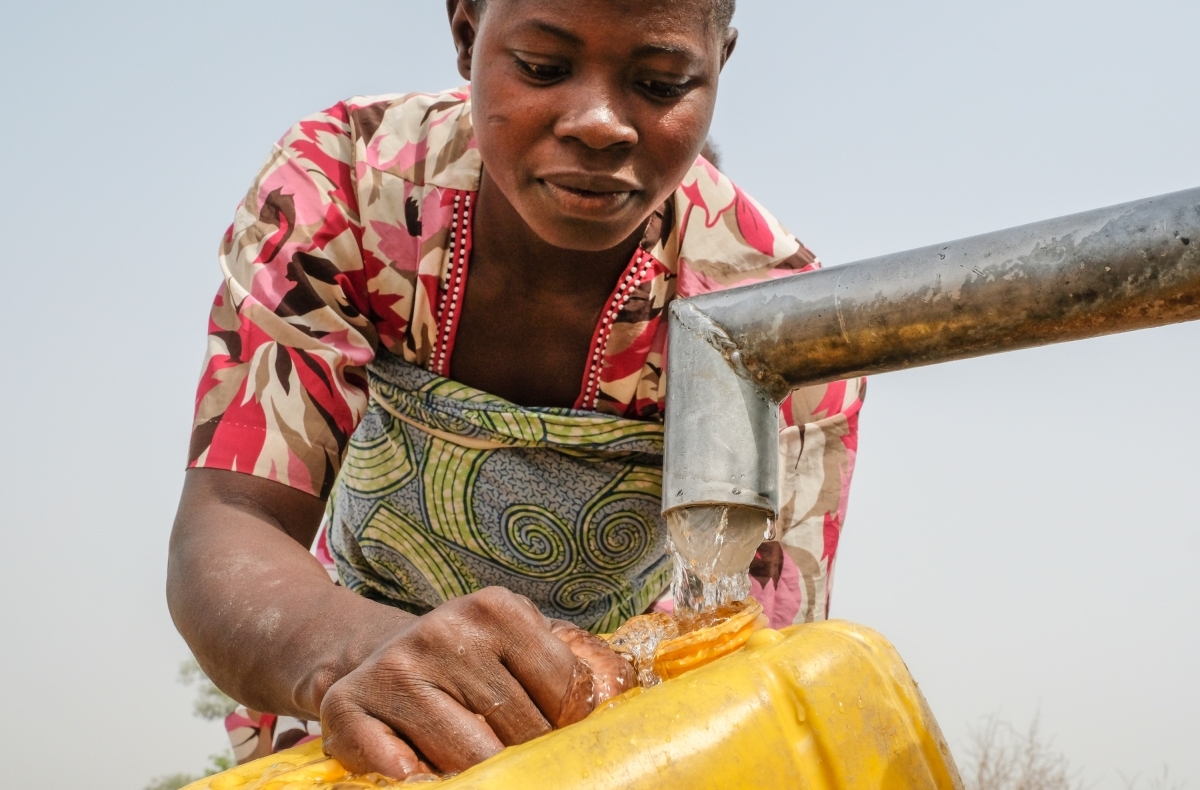Getting to the source of drinking water contamination
A new study identifies varying pathways of drinking water contamination, suggesting multiple types of public health interventions are needed to protect communities.
February 6, 2020

Photo Credit: Axel Fassio/CIFOR
A one-size-fits-all approach isn’t the answer to ensuring safe drinking water, according to new research. The study, published in a special issue of the International Journal of Environmental Research and Public Health, identifies multiple causes of fecal contamination in home drinking water across households in Kenya. Understanding these different contamination pathways is essential for designing water, sanitation and hygiene interventions that can successfully protect water quality and health of communities across the globe.
“It has been a persistent challenge to identify risk factors for drinking water contamination. We found that transmission pathways are complex, and the source of contamination can come from multiple hosts,” said senior author Angela Harris, Stanford alumnus and assistant professor in the Department of Civil, Construction and Environmental Engineering at North Carolina State University. “We were able to identify that ruminant feces were making its way into household drinking water after collection. Animal feces management is often neglected in WASH interventions, so our work suggests that closer evaluation of the health effects related exposure in these settings is warranted.”
While progress has been made toward ensuring universal access to safe drinking water by 2030 – a key focus of UN Sustainable Goal 6 – according to the World Health Organization at least two billion people use a drinking source contaminated with feces. A common cause of preventable illnesses and death across low-income communities, contaminated water can transmit diseases such as cholera, polio, typhoid and dysentery.
An estimated 1.4 billion people have access to basic water services – defined as an improved source (such as a borewell with handpump) located within 30-minutes roundtrip from home. Households using such sources must fetch and store water, providing an opportunity for water to become contaminated by hands, cups and other objects entering it.
To identify combinations of household and environmental factors leading to stored water contamination, the researchers collected and examined pairs of water samples (one from home and one from the communal water source) from 45 households in rural Kenya. All 90 samples were analyzed for fecal indicator bacteria such as E. coli and enterococci along with species‐specific human and ruminant animal (cow, sheep and goat) fecal markers using microbial source tracking. They also collected household information such as type of water source, animal ownership, storage time and soap usage to detect the interconnected factors associated with animal fecal contamination into stored water.
The team found three distinct combinations of factors associated with the presence of animal feces in a household’s stored drinking water. One of these “recipes” includes having animals present in the household’s compound, not having soap for handwashing, and using unsafe methods for extracting water out of storage containers – factors that most observers would find unsurprising. Another recipe, however, suggests that even a household that has no animals in its compound was likely to have contaminated drinking water if it had been stored for more than 5 hours and if the household lacked soap for handwashing. The findings indicate that animal fecal contamination is widespread in communities, perhaps because manure is used in home construction and agriculture, as well as for fuel. They also suggest that public-health interventions designed to reduce the risk of animal fecal contamination should not be restricted to households who own animals.
“Most research into the causes of stored water contamination assumes that findings can be applied to households throughout a community,” said study co-author Jenna Davis, a professor of civil and environmental engineering at Stanford and director of Stanford’s Program on Water, Health and Development. “In this study, we show that things are actually more complicated. There are multiple ways in which water be compromised, all of which would have to be taken into account for a public-health intervention to be effective.”
Study co-authors include Latifah Hamzah, Stanford Department of Civil and Environmental Engineering; Alexandria B. Boehm, professor in the Stanford Department of Civil and Environmental Engineering and senior fellow at the Stanford Woods Institute for the Environment; Amy Pickering, assistant professor in the Department of Civil and Environmental Engineering, Tufts School of Engineering; Marlene Wolfe, postdoctoral researcher at the Stanford Woods Institute for the Environment; and Maryanne Mureithi, previously at Innovations for Poverty Action.
Contact Information
Rob Jordan
Associate Editor, Environment and Sustainability, Woods Institute
rjordan@stanford.edu


